3 The Marble Room

 |
|
 |

|
10 |
Chimtou Marble in Republican Rome
Hardly any produce of high quality imperial production (i.e.blocks and columns) was left in Chimtou's quarries.
This is why a fragment of a fluted column in classic giallo antico (marmor Numidicum) from the second cent. AD
temple of Venus at Sicca Veneria-El Kef has to represent one of the earliest applications of Chimtou marble
in the history of Rome, immediately after Julius Caesaręs assassination (March 15, 44 B.C):
Suetonius Paulinus, vita Iulii, 85 reports: ...Postea solidam columnam prope viginti pedum lapidis Numidici in
foro statuit [in]scripsitque PARENTI PATRIAE. "....Lateron (the people) erected a massive column of nearly twenty
feet of Numidian stone on the forum and inscribed: "To the Father of the Fatherland".
|
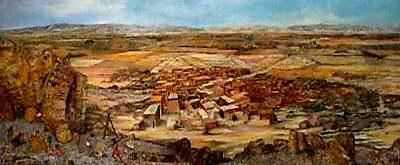 |
11 |
Numidian Village and Imperial Quarry
A view from the marble hills at Chimtou and the Majrada Valley. Around
the turn of time (under Emperors Augustus, Tiberius) a first bridge for
the secondary road from Carthage to Sicca Veneria (El Kef) is already built.
The indigenous Berber population is leaving their homes and graves
for the Roman colonial settlement and military post. They service
the road and the Marmor Numidicum quarries in Imperial possession. Painting
by Dirk Engelken.
|

|
12 |
The Splendour of Marmor Numidicum
a) Hic Nomadum lucent flaventia saxa - "Here shine the Numidian golden blonde
rocks"- A quotation from Roman poet Statius referring to marmor Numidicum
marble veneer in a villa in Rome. Though all the colours represented
in this display - and more - can be found in Chimtou quarries, only the
rosy and golden shades had the chance to come to fame in antiquity. |
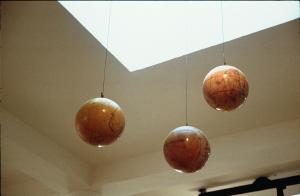 |
|
b) The splendour of giallo antico (marmor Numidicum) is best displayed in a sculpture's purest
form, the sphere: three planets float under the ceiling of the museum's Marble Room.
|
|
13 |
Imperial Quarries in the Roman Empire |
|
14 |
Quarry Administration in Simitthus
|
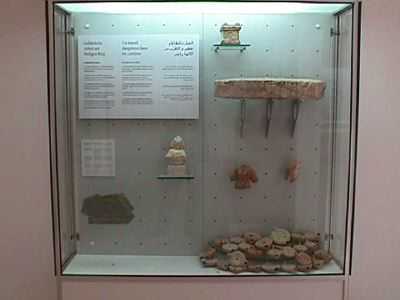
|
15 |
Ancient Gods for Quarry and City
The marble hills of Chimtou with their sanctuaries proved in F.Rakobs´s
excavations to be full of votive finds for various gods and godesses
(cf.also the Chimtou athlete boy, No.25). |
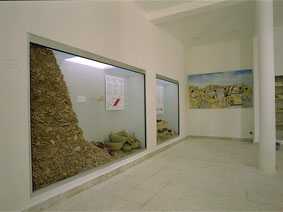 |
16 |
Forced Labour in the Quarries
The convicts in the forced labour camp had no quarrying experience. As
the waste-to- extraction rate in the Imperial production of block and column
was 5:1, constant cleaning of the work places
for skilled masonry labour was needed. This was done by the convicts,
inmates of the forced labour camp north of the marble hills (cf.Chimtou
Site no.8)
|
|
17 |
Marble Extraction Techniques
(cf. above, 16)
|
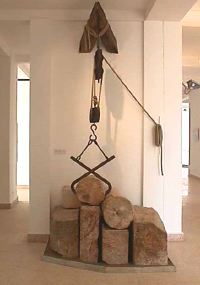
|
18 |
The Transport of Marble
An array of crane, block and columns to represent the extraction in the
quarries. On its backside a distribution map of Marmor Numidicum throughout
the Roman Empire (20). |
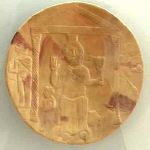
|
19 |
Private Marble Production
Copy of the finest example of sculptured plates in Chimtou marble (3rd
cent.CE.). The original is in the museum of Cologne, Germany. |
|
20 |
Chimtou Marble Export in the Roman Empire. An up-datable distribution
map of Chimtou finds from England to Turkey. |
|
21 |
Giallo Antico Corniches from Bulla Regia |